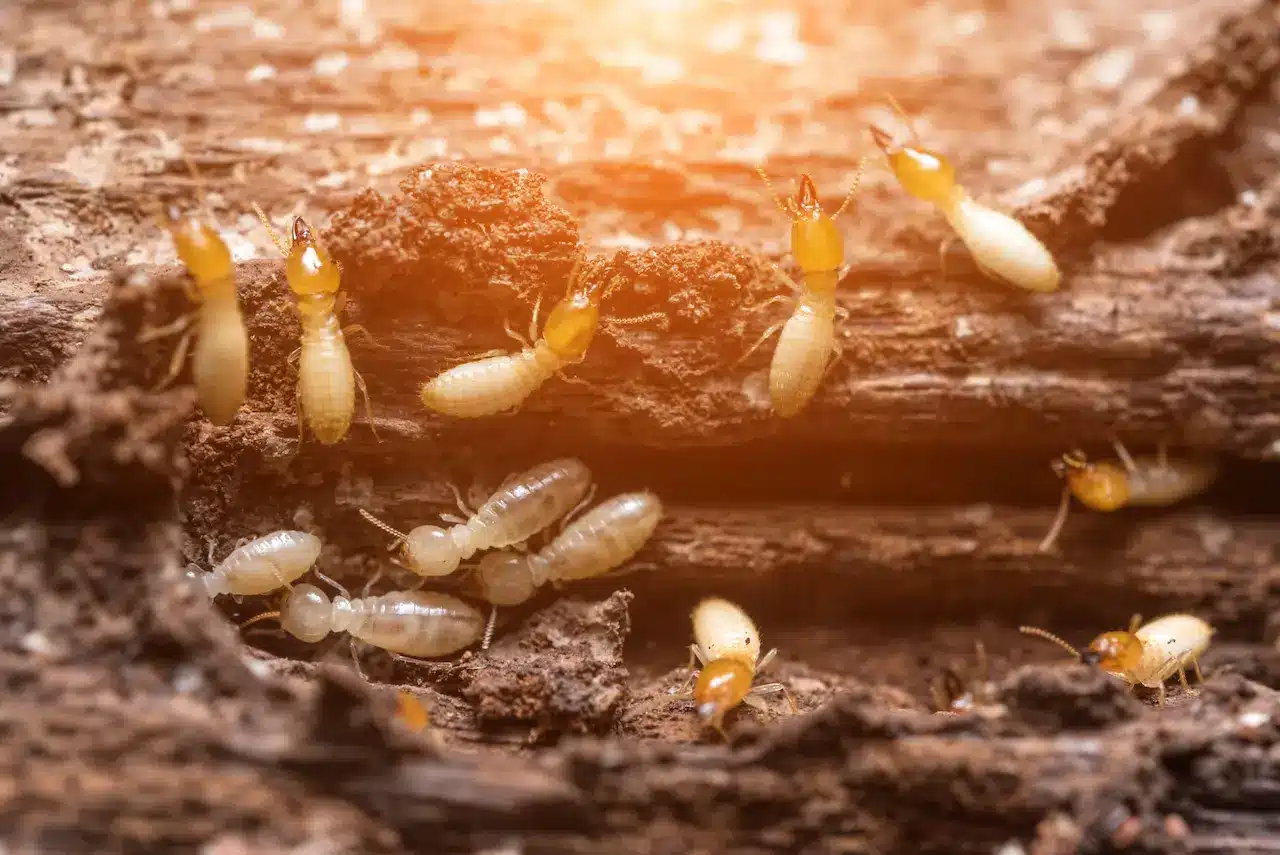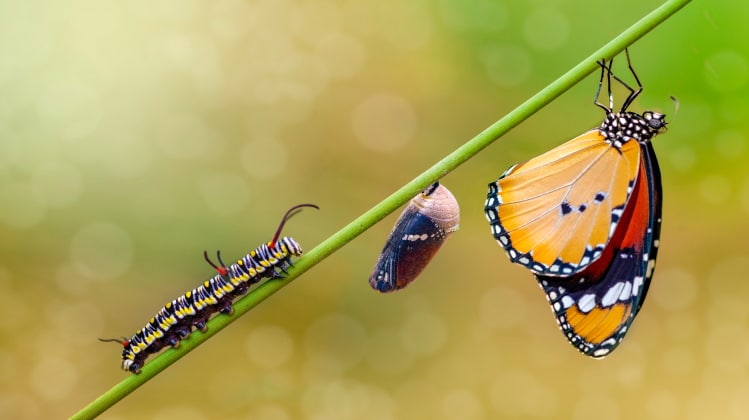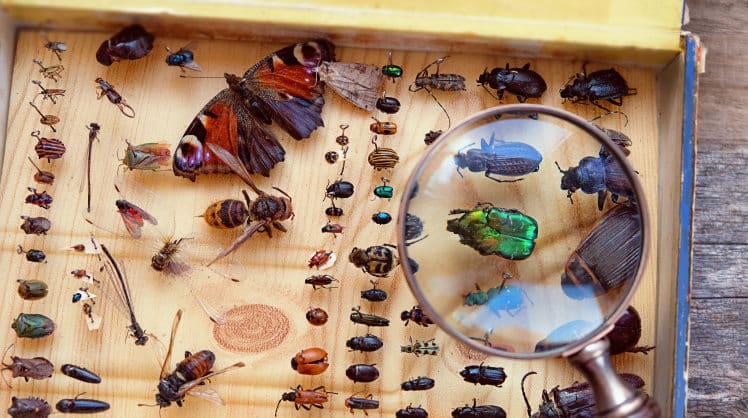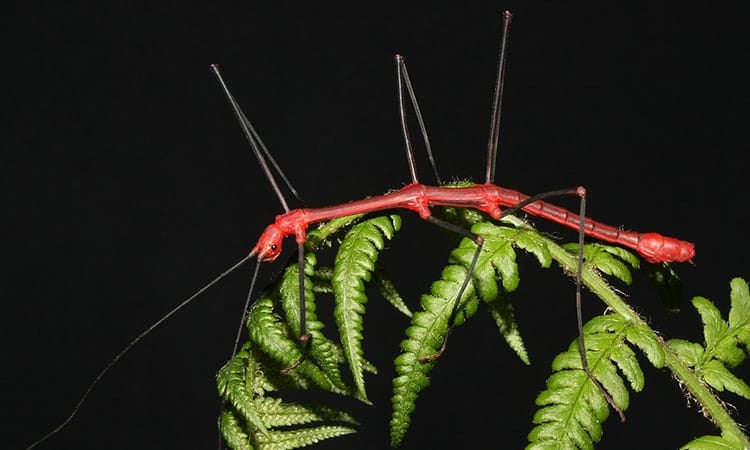June Bug vs. Japanese Beetle
June Bug vs. Japanese Beetle: What Are The Differences?
With almost a million known species, insects are the most considerable class of creatures on Earth. Among them, the beetles (Coleoptera) are the richest in terms of diversity – in the US alone, there are nearly 24,000 species!
Needless to say, there are many biological variations in the beetle world. However, some of these evolutionary “designs” overlap. Different species end up looking or behaving similarly and can easily get confused.
We’re here to set that record straight.
I’ll start with a question – Do you know the difference between June Bug? Japanese Beetle? What are these insects anyway?
If you want to know more, read on.
| June Bug (Cotinis nitida) | June Bug (Polyphylla decemlineata) | Japanese Beetle (Popillia japonica) | |
|---|---|---|---|
| Insect order | Beetles (Coleoptera) | Beetles (Coleoptera) | Beetles (Coleoptera) |
| Natural range | Eastern the United States and Canada | Western United States and Canada | Japan |
| Color | From brown with green streaks to uniform metallic green-brown | Brown with ten white streaks | Iridescent copper and green |
| Length | 0.6–0.9 in (15–22 mm) | 1.5 inches (3 cm) | 0.6 in (15 mm) |
| Diet* | Fruits | Foliage (trees) | Foliage |
* Refers to the diet of adult forms. Their larvae live underground, eating degrading organic matter and plant roots – making them unpopular with gardeners as they are lawn pests.
June Bug vs. Japanese Beetle
The Japanese beetle (Popillia japonica) is an imported beetle distinct from American June bugs. The native Green June bug, Cotinis nitida, is most commonly confused with the Japanese beetle. On the other hand, the Japanese beetle is sometimes mislabeled as a “June bug” based on similar looks and the same emergence time (you’ve guessed it, it’s June).
What Is A June Bug?
The June bug is an insect but not a true bug – it is a beetle. What’s more, it’s a beetle belonging to the 30,000 species-large family Scarabaeidae, the scarab beetle (yes, and the sacred scarab). The same is true for the beetle most commonly referred to as the June bug in the US – Cotinis nitida.
The green June bug is a medium-to-large beetle species well-known for its metallic green coloration. However, the color may vary among individuals and commonly has bronze overtones on the sides. That is why the species can be easily confused with the Japanese beetle, which is green-and-copper.
Related articles:
Cotinis nitida is found in the east of the US and Canada. Adults June bugs feed on soft-skinned fruit, tomatoes, and even corn during the milk stage. Since they commonly feed gregariously, they can do quite a lot of damage on farms and in gardens.
However, here’s where things get confusing. There are several scarab beetles called “June bugs,” most of them belonging to the family Phyllophaga.
What Insects Are Called June Bugs?
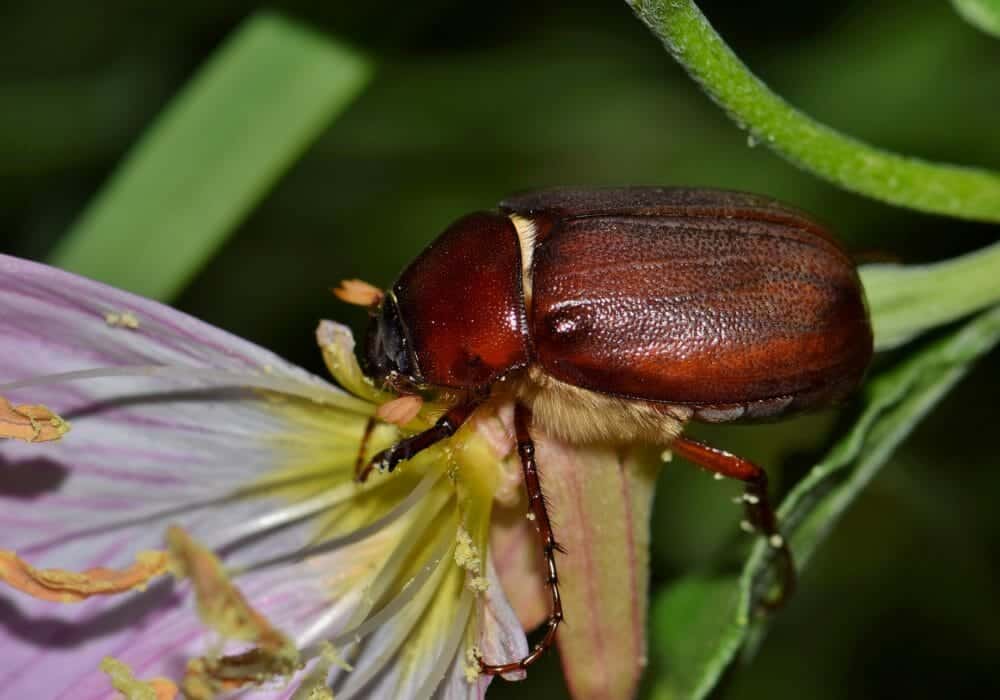
Our next June bug “inline” (literally) is the Ten-lined June beetle (Polyphylla decemlineata). Although it lacks metallic green coloration, it appears simultaneously as the Japanese beetle – the adults emerge sometime in June.
Other than that, it bears minimal resemblance to foreign species. It is a showy and large beetle (22 to 28 mm) with a yellowish-brown base color contrasted by pure white lines on the elytra. Also, it makes strange hissing noises when handled.
There is one geography trick. The green June bug is native to the East Coast of Northern America. On the other hand, the Ten-lined June beetle is native to the West Coast. With that in mind, you could say that C. nitida is the “June bug” of the east, while P. decemlineata, along with the Figeater beetle (Cotinis mutabilis), are the “June bugs” of the West.
These are why these “June bugs” may get all mixed up when using common terminology.
Other beetles that also occasionally get labeled as “June bugs” are
- European chafer (Rhizotrogus majalis), a European beetle also imported to North America.
- Figeater beetle (Cotinis mutabilis) – similar to C. nitida, but native to the Western United States.
For practical purposes, when comparing the Japanese beetle vs. June bugs, we’ll focus on one species – the Green June bug, Cotinis nitida.
Did you Know?
The insects’ common names can be confusing and overlap. The only way to reliably tell a species of an insect by its name is to look at its scientific (Latin) version.
What Is A Japanese Beetle?

The Japanese beetle is a species of scarab hailing from Japan. It has been introduced in Europe and the US.
As you can see in the table above, it is considerably smaller than the native June beetles. Also, it has dense hairs on the sides of its abdomen. It gets mixed up with the green June beetle because of the similar coloration and general body shape.
The Japanese beetle is well-known for its appetite for leaves which causes quite a lot of damage in orchards and beyond.
June Bug And Japanese Beetle Similarities
Despite all the differences, there are quite a few similarities between the real and the “fake” June bug.
Here are some to tease you into learning more!
- June bugs and Japanese beetles both belong to the Scarab family, Scarabaeidae.
- They go through full metamorphosis; larvae live underground and appear after overwintering. In some species, this process can last several years.
- They share predators. In most cases, these are birds such as blue jays, but also raccoons and other smaller mammals that eat insects and other invertebrates.
- They are both edible to humans (!), just not overly palpable. In Asia, locals say that June bug grubs (larvae) are the best choice for consumption.
- They are both considered agricultural pests, but…
- They are completely harmless to humans.
Conclusion
In the end, let’s sum it up!
The Japanese beetle is non-native, smaller, and likes to devour leaves. Also, it has tufts of hair on the side of its abdomen.
The head and the thorax are greenish, and most of the elytra are bronze.
The adult June bug is native and larger, and the color varies in metallic hues – from golden brown to emerald green, with light elytral edges. They prefer eating fruit.
However, note that more than one species is referred to by the common name “June bug.”
Both have an underground larval stage that eats plant roots, among other plant matter.
These little metallic jewels are an exciting sight to behold, no matter their species. However, it feels good to finally know the exact difference, right?
References
- Cotinis nitida, Animal Diversity Web (Retrieved on 20 November 2022)
https://animaldiversity.org/accounts/Cotinis_nitida/ - Numbers of Insects (Species and Individuals). Buginfo. Smithsonian. 1996.
https://www.si.edu/spotlight/buginfo/bugnos - Scarab Beetle. Encyclopedia Britannica (Retrieved on 19 November 2022)
https://www.si.edu/spotlight/buginfo/bugnos - TEN LINED JUNE BEETLE. Washington State University (Retrieved on 20 November 2022)
https://entomology.wsu.edu/outreach/bug-info/ten-lined-june-beetle/
Disclaimer
Earthlife.net does not provide medical advice. We do our best to help users understand the science behind living beings; however, the content in the articles and on the website is not intended to substitute for consultation with a qualified expert. By interacting with the website and/or our email service, you agree to our disclaimer. Remember that you must consult a specialist before using any of the products or advice on the web.


